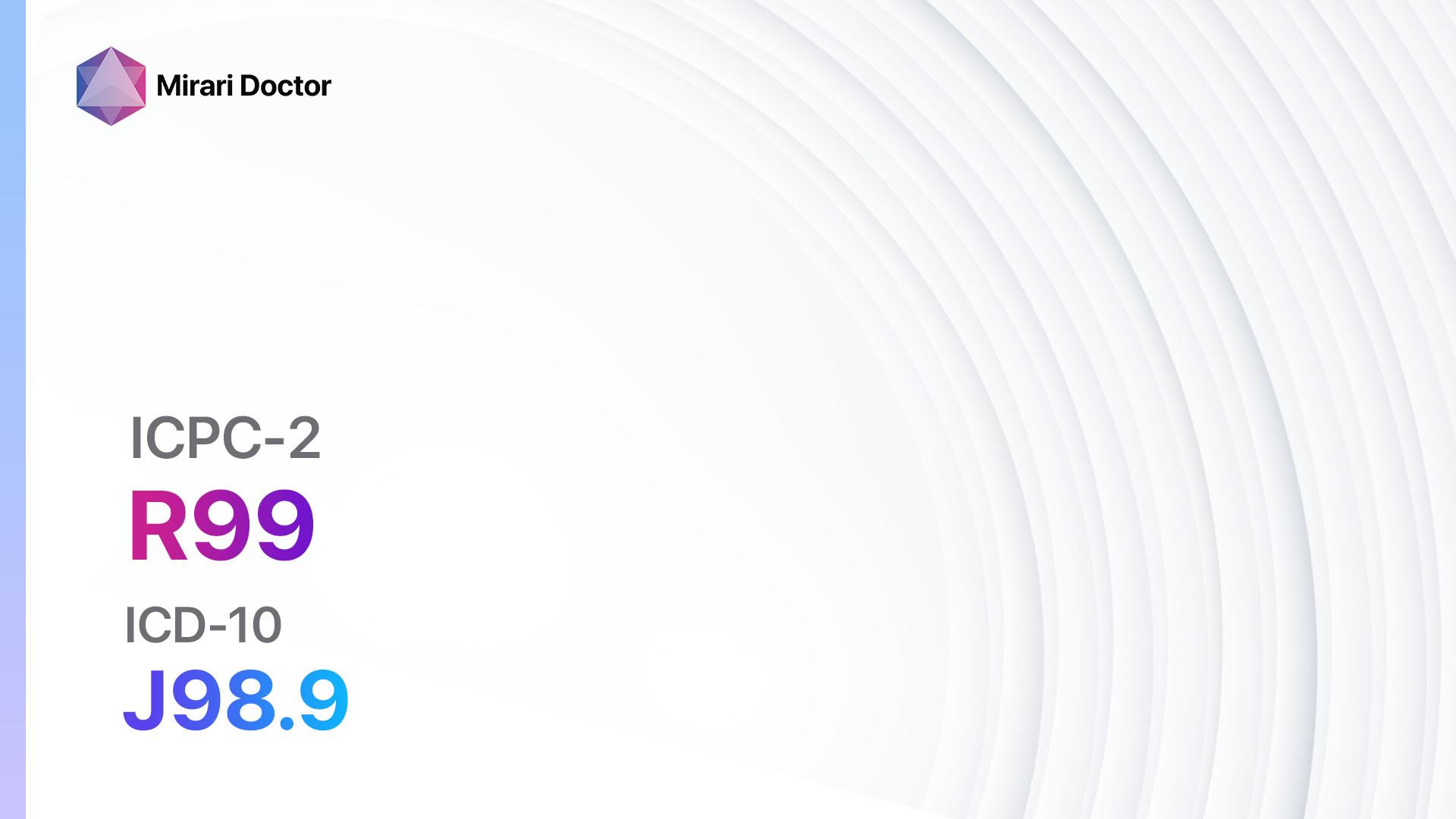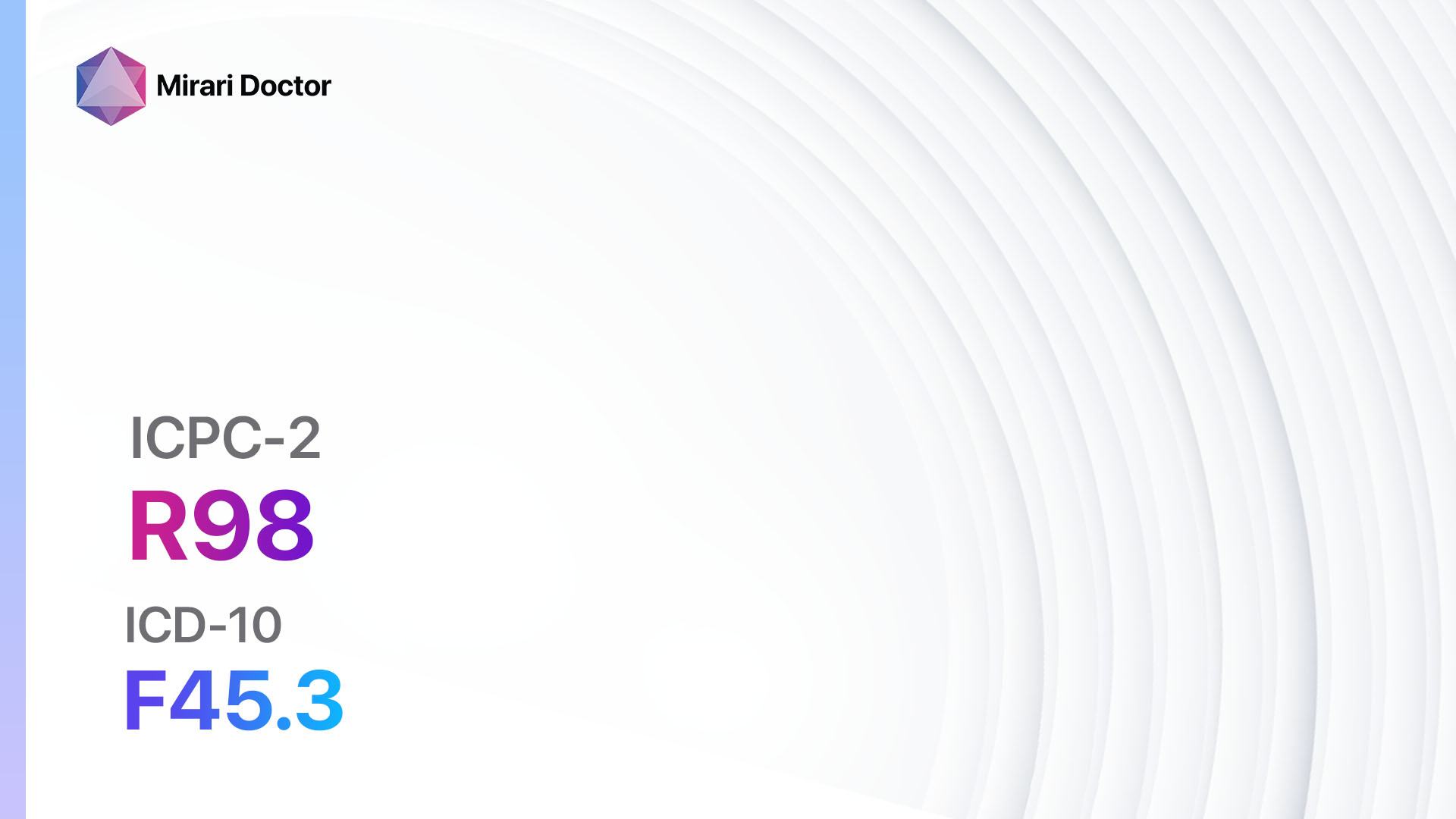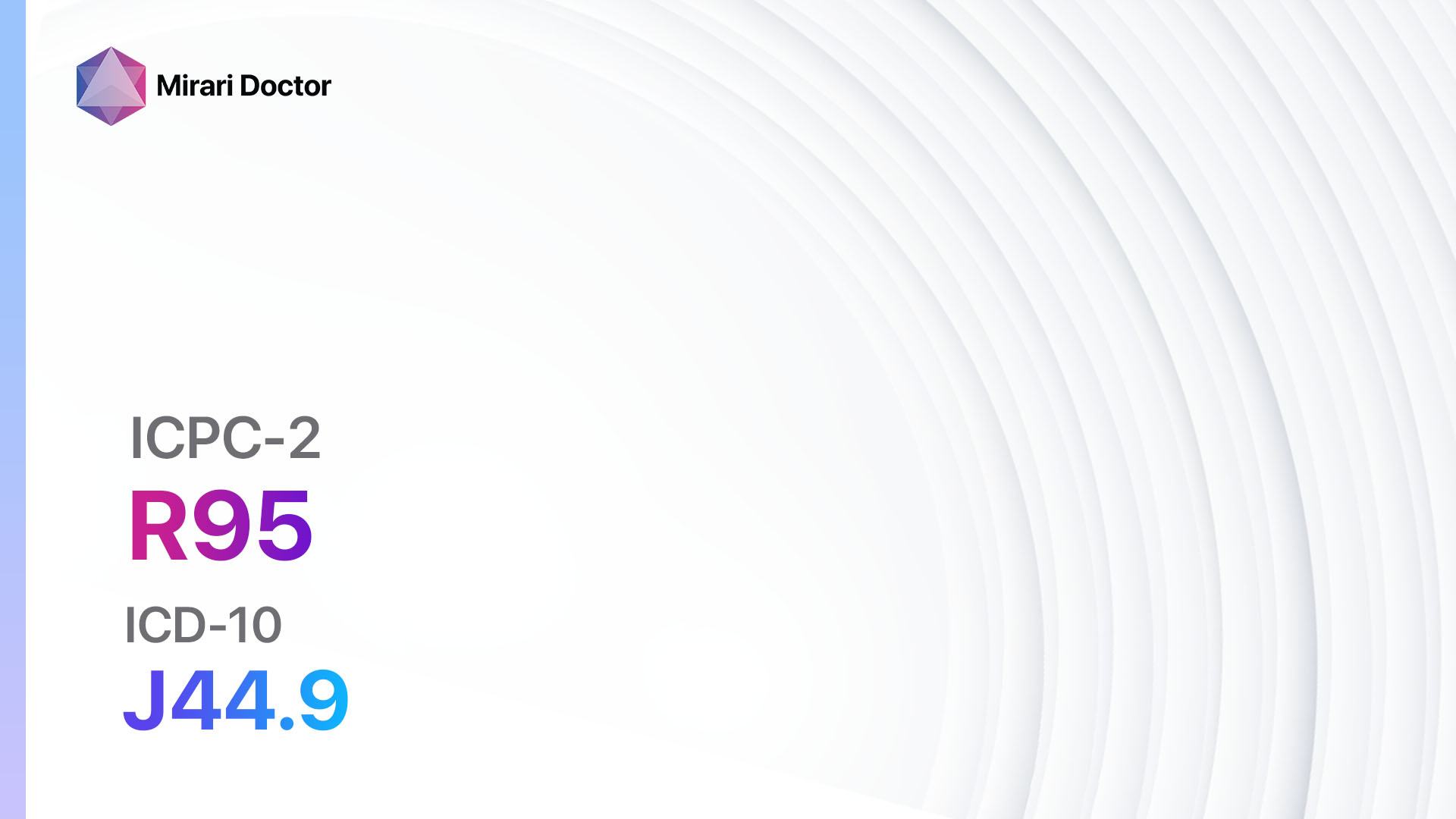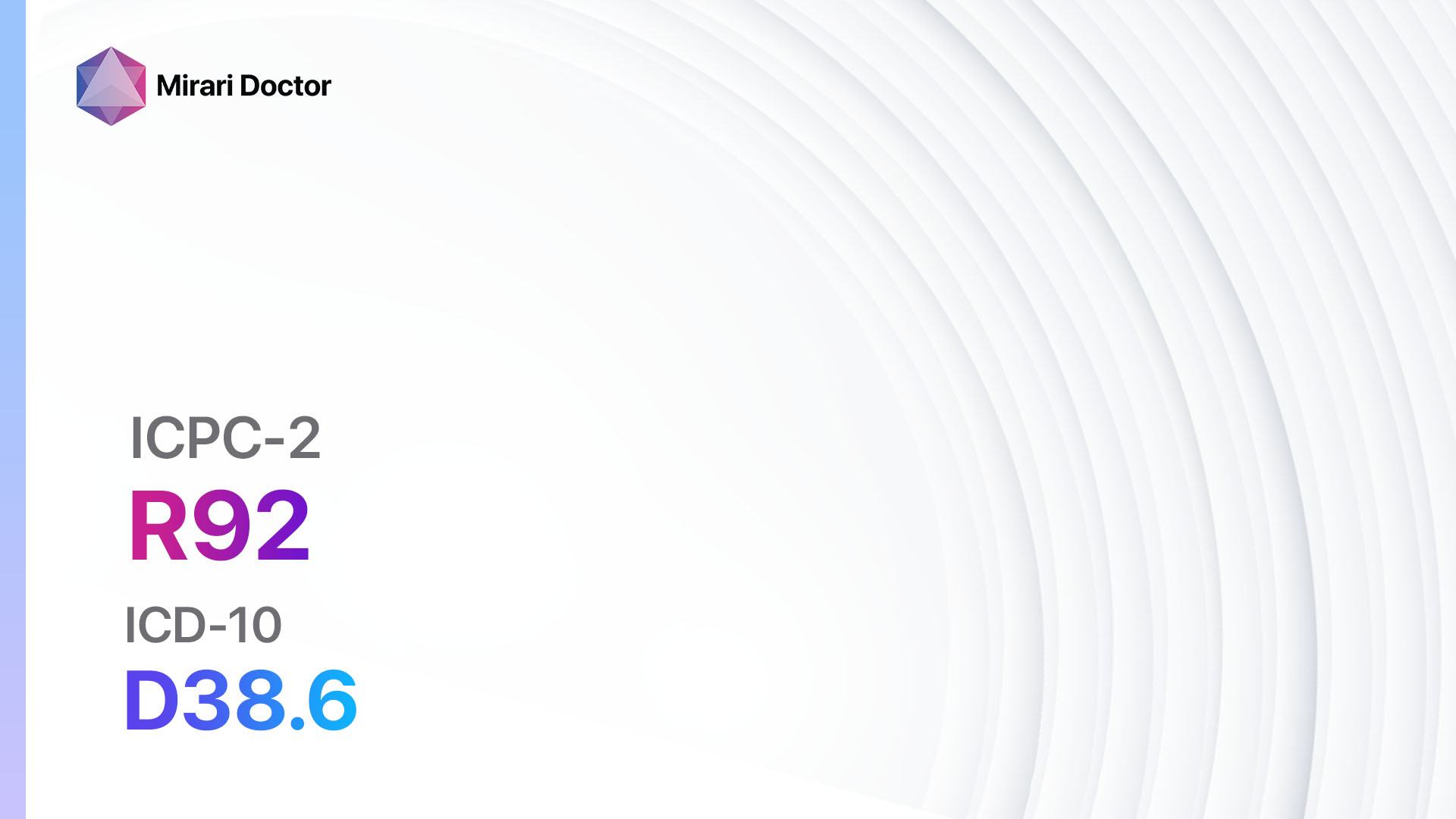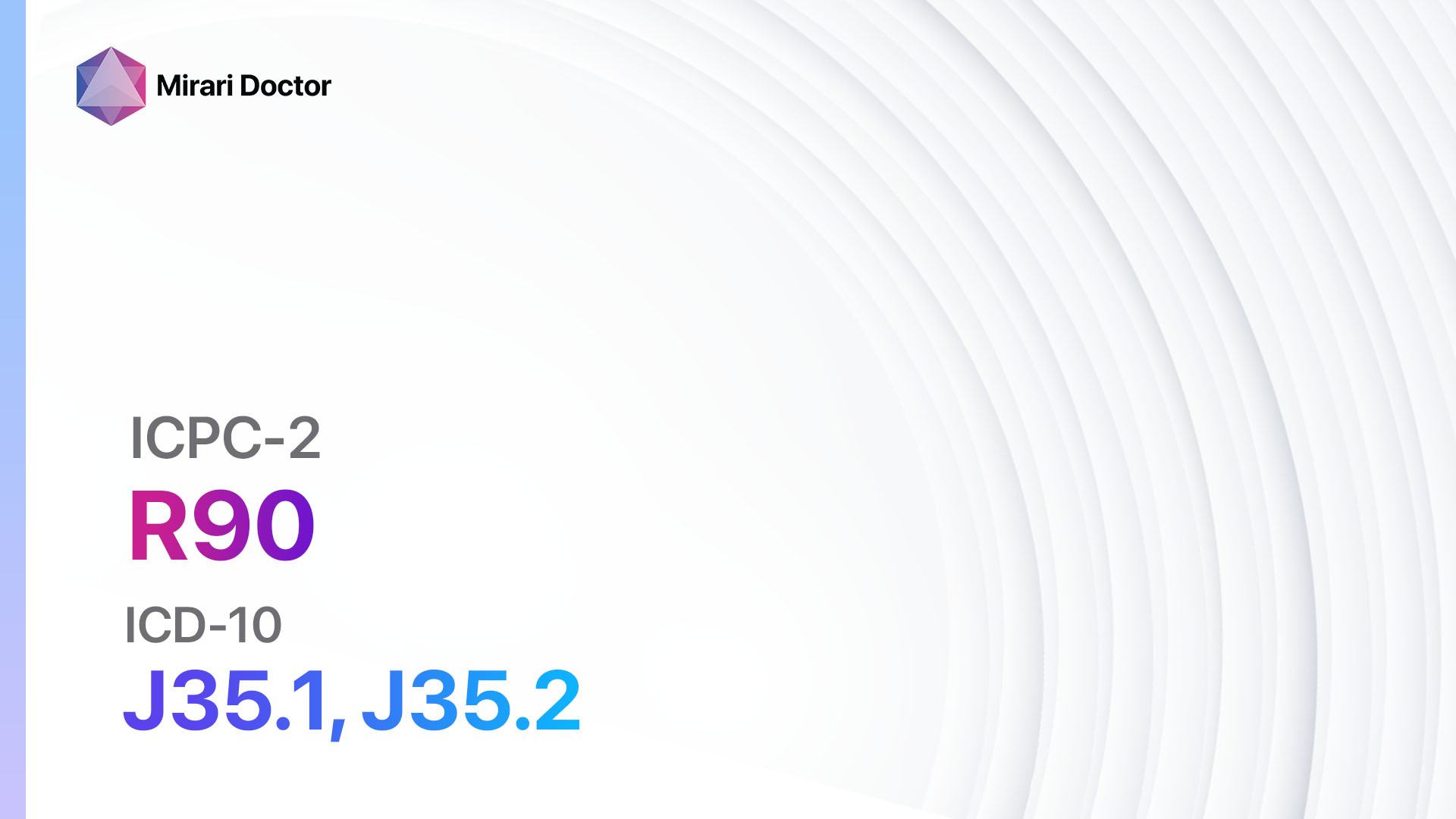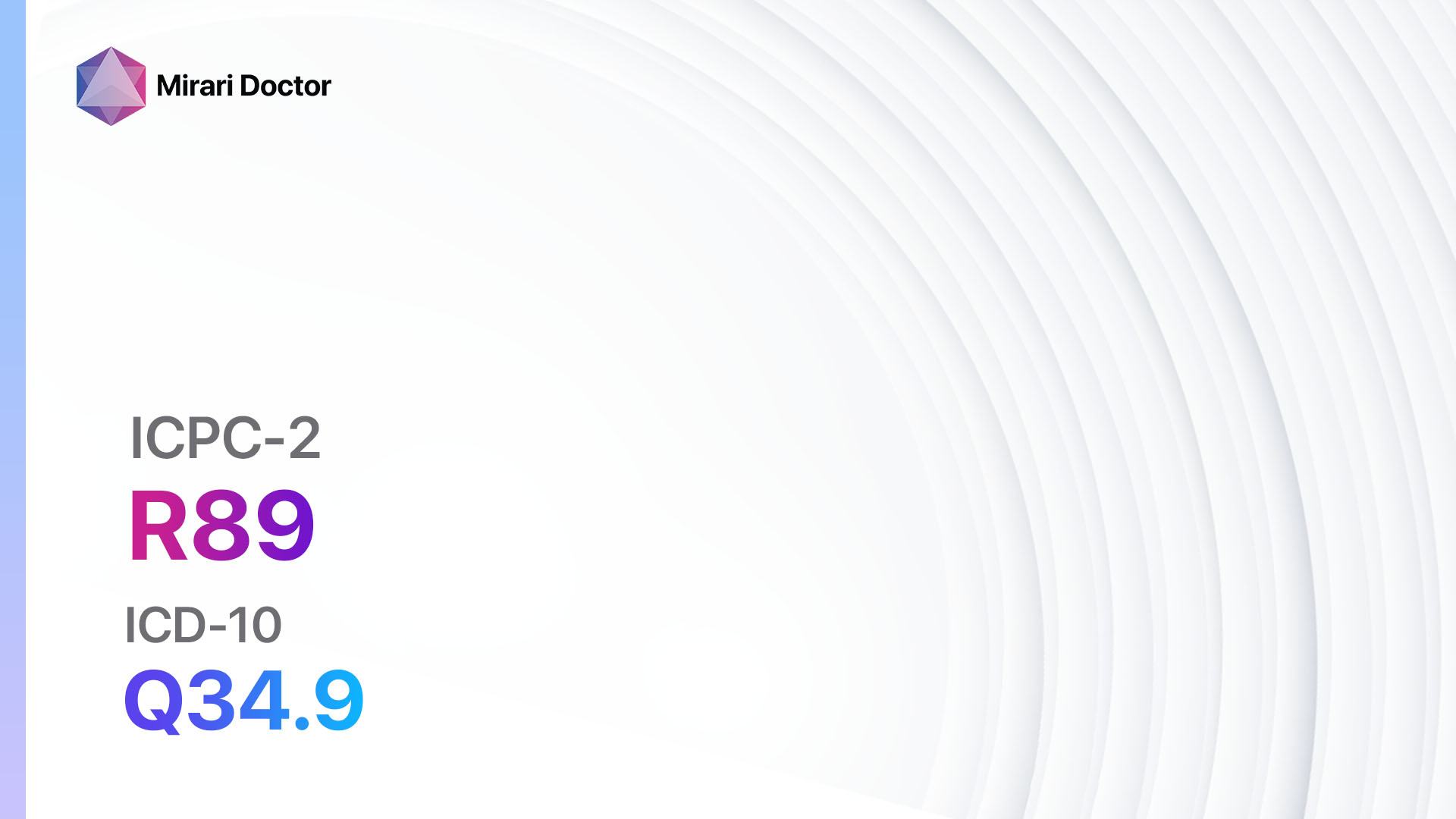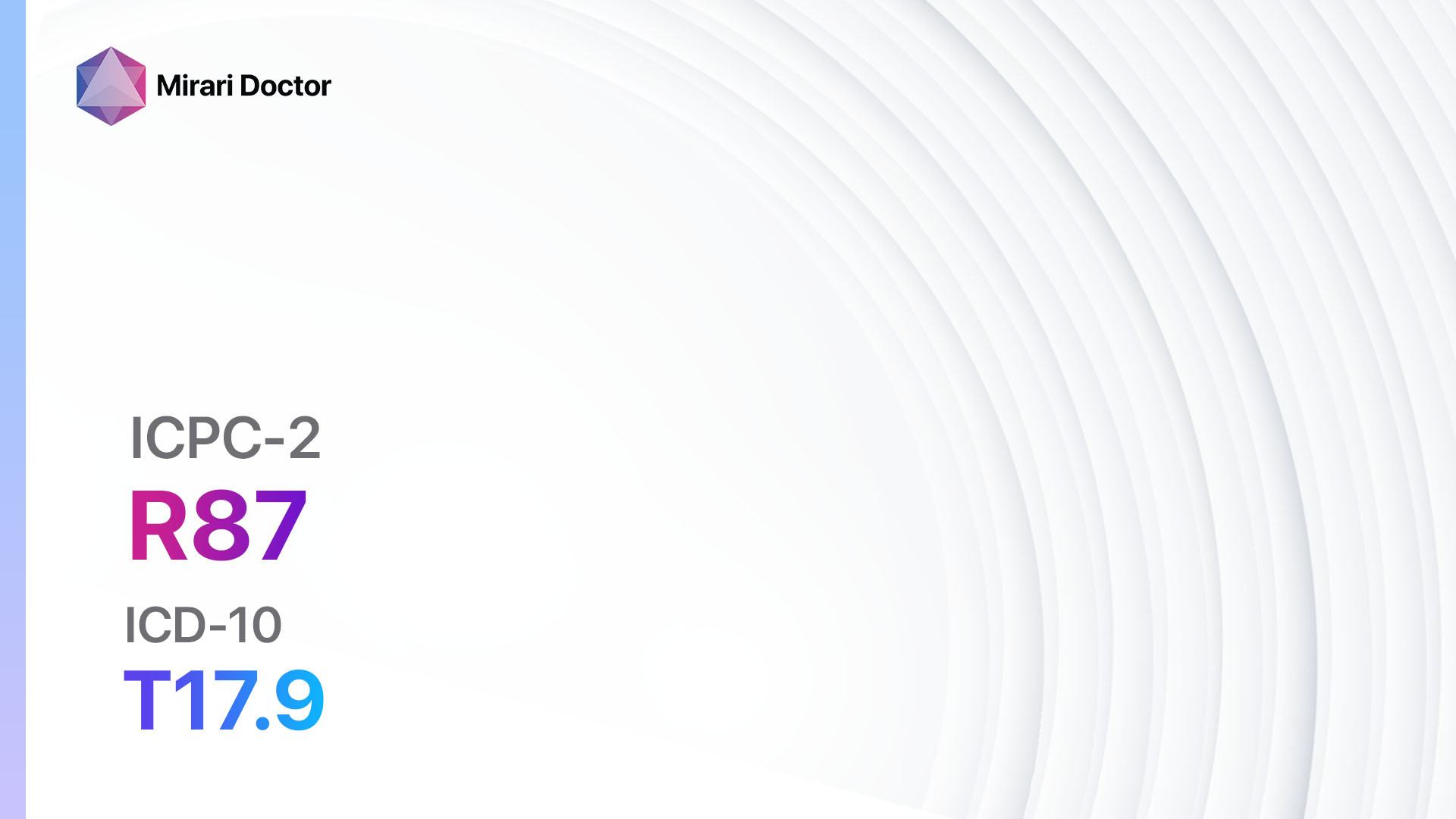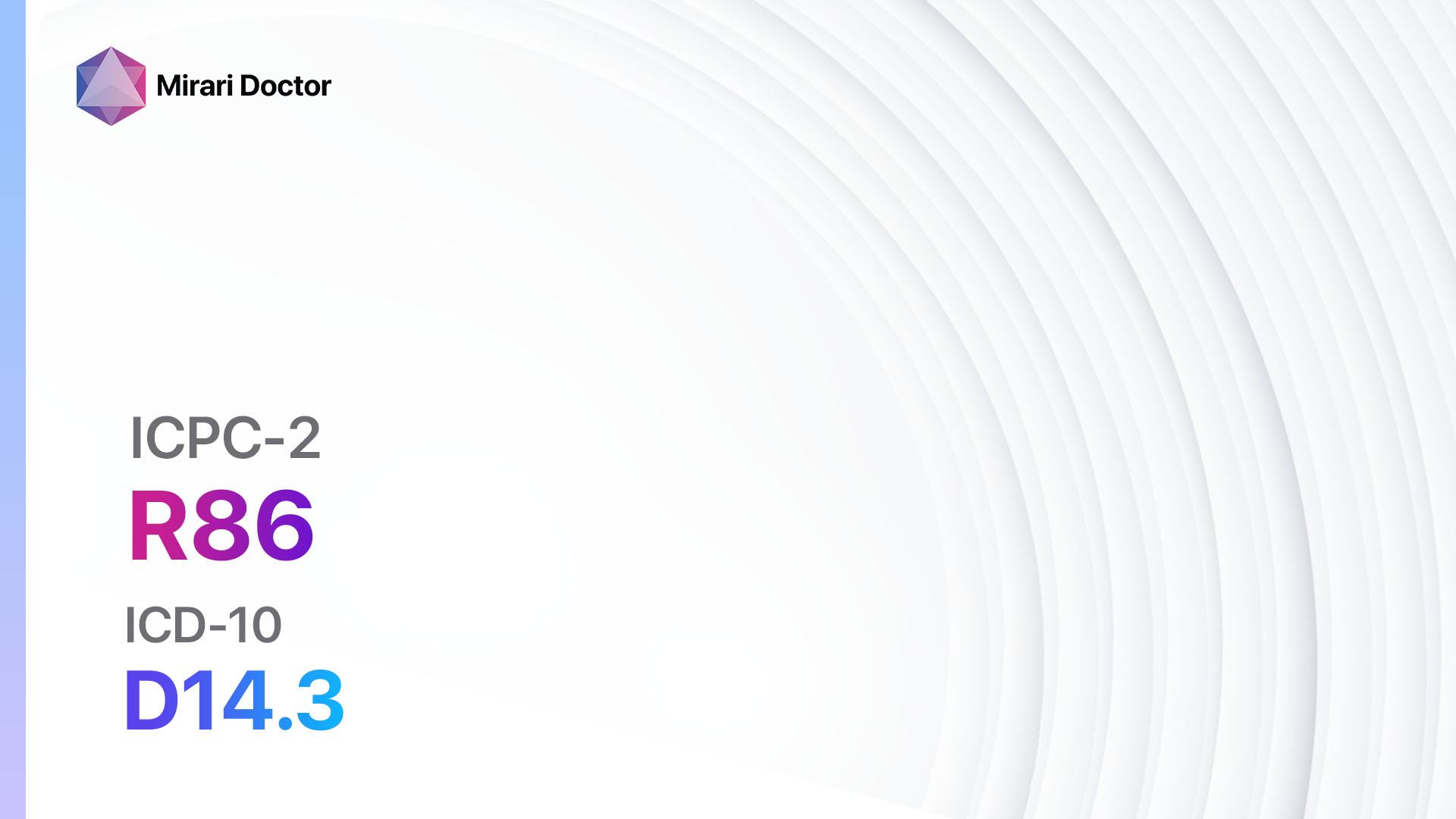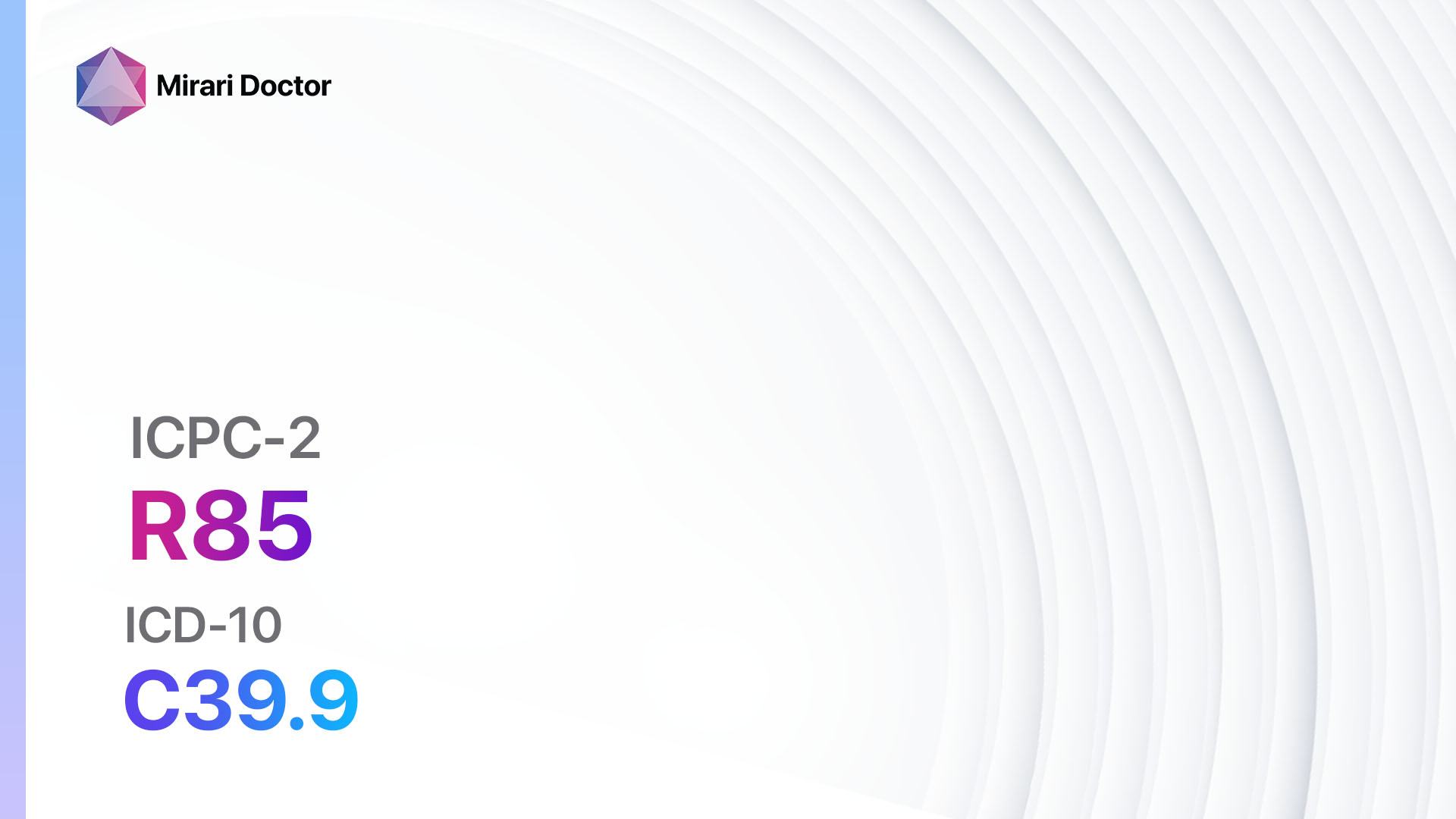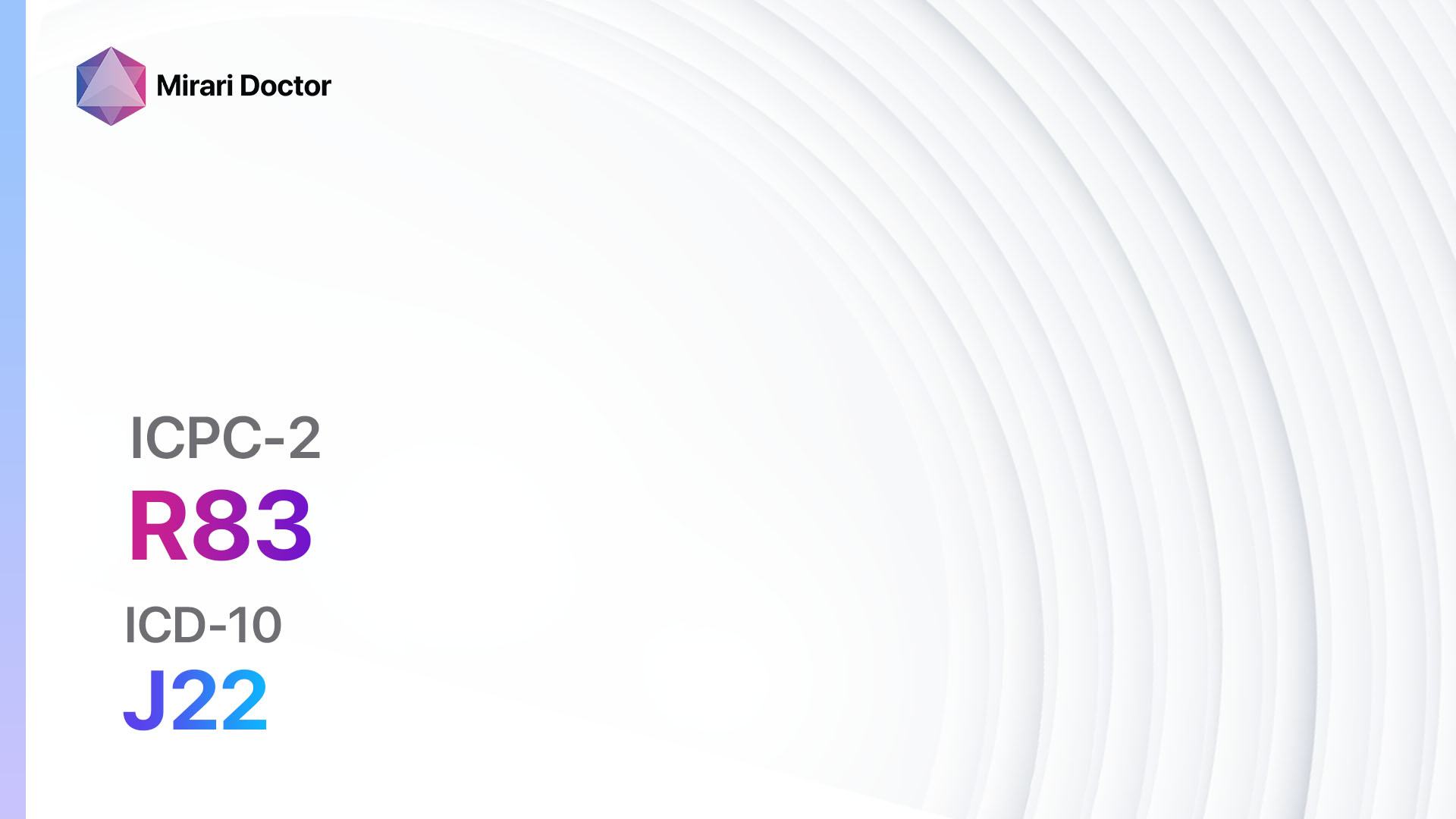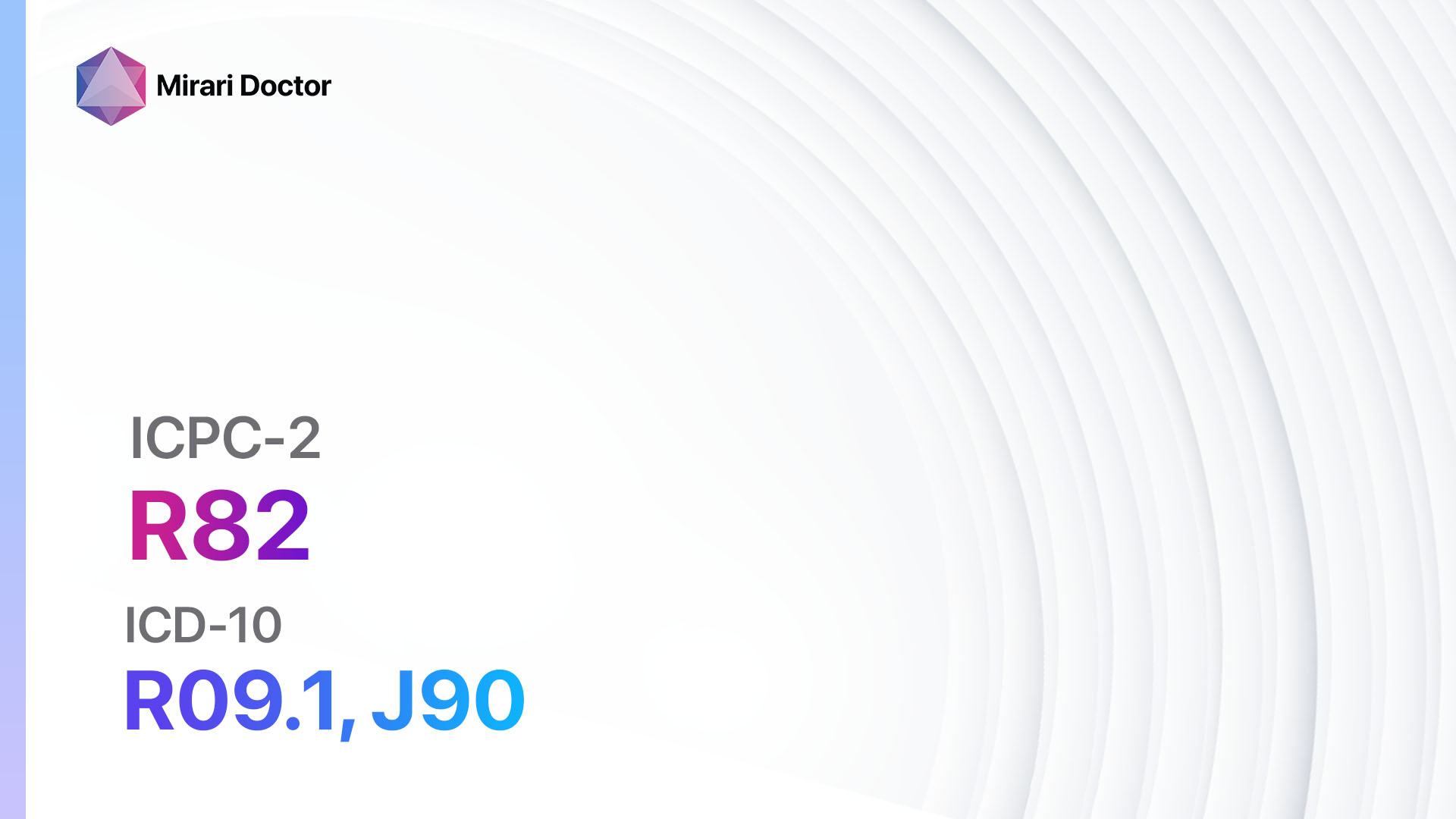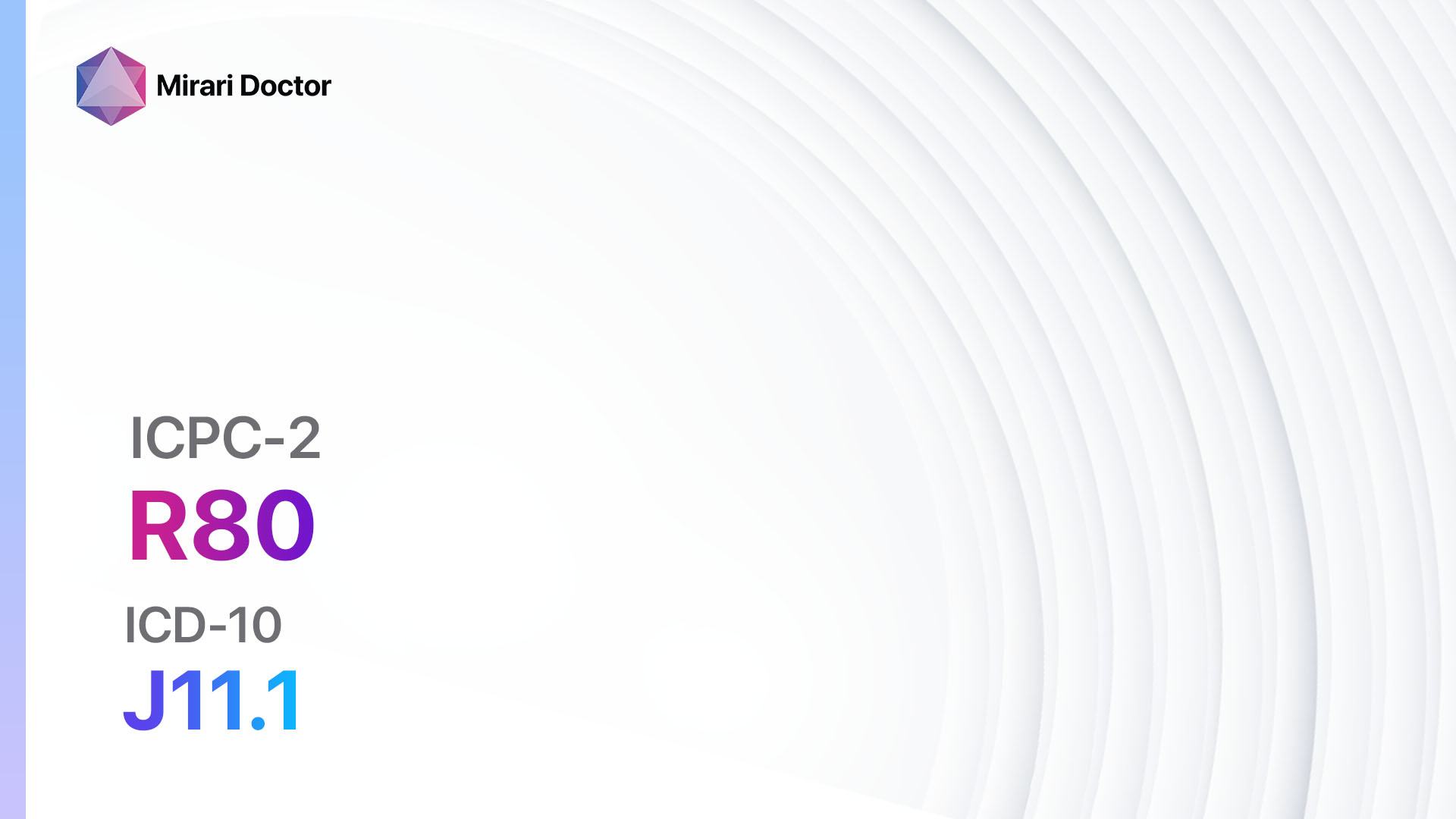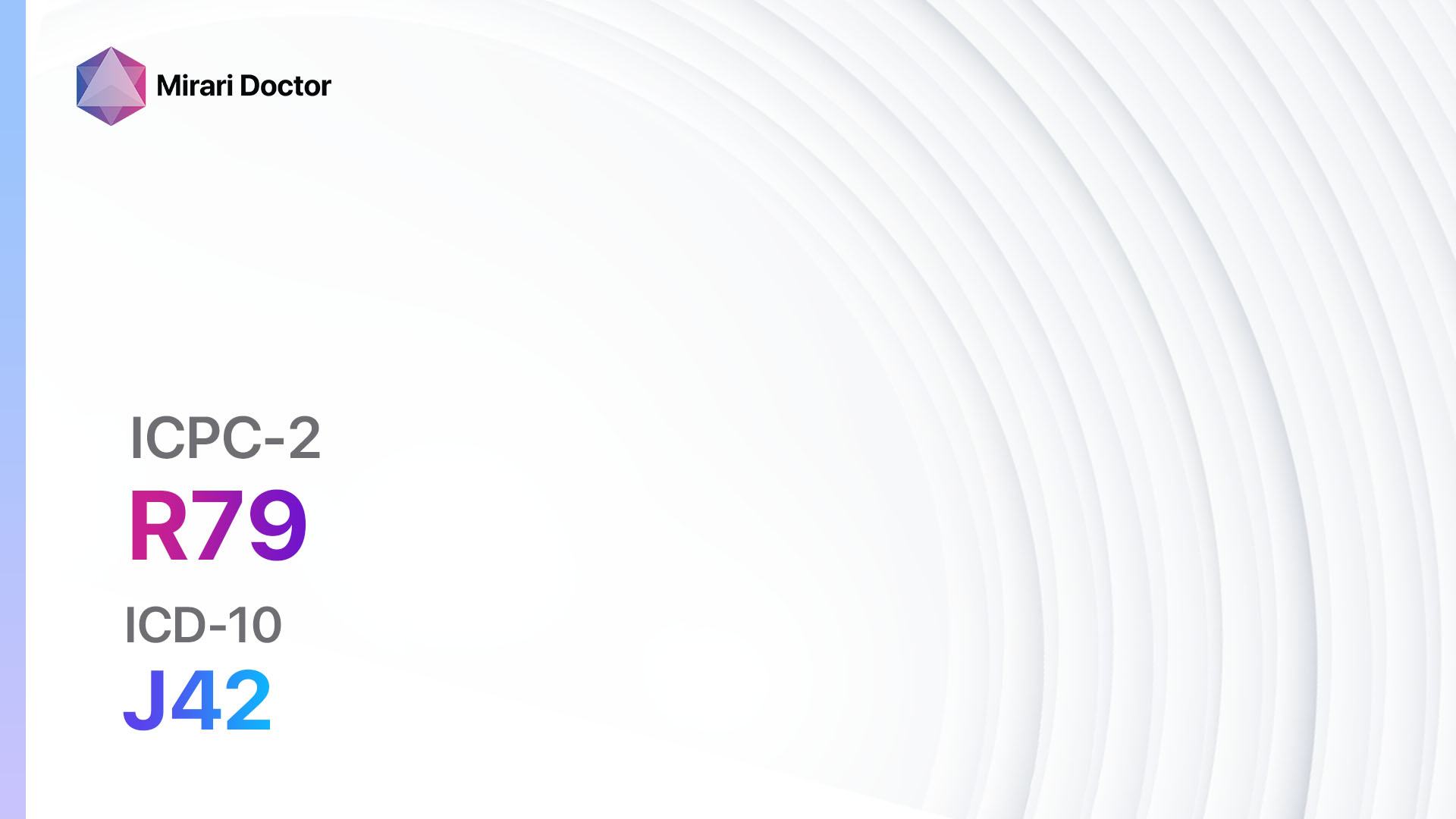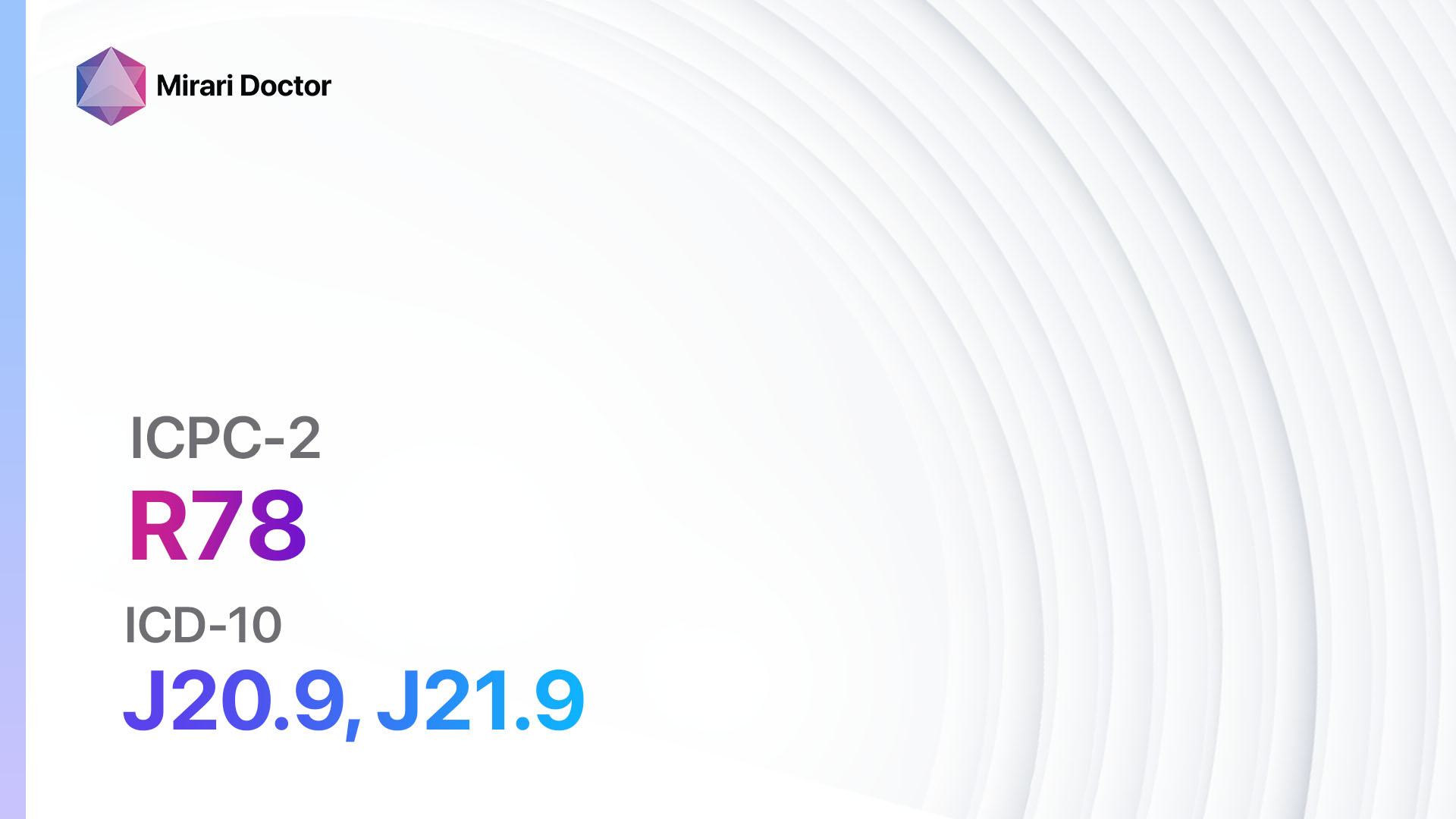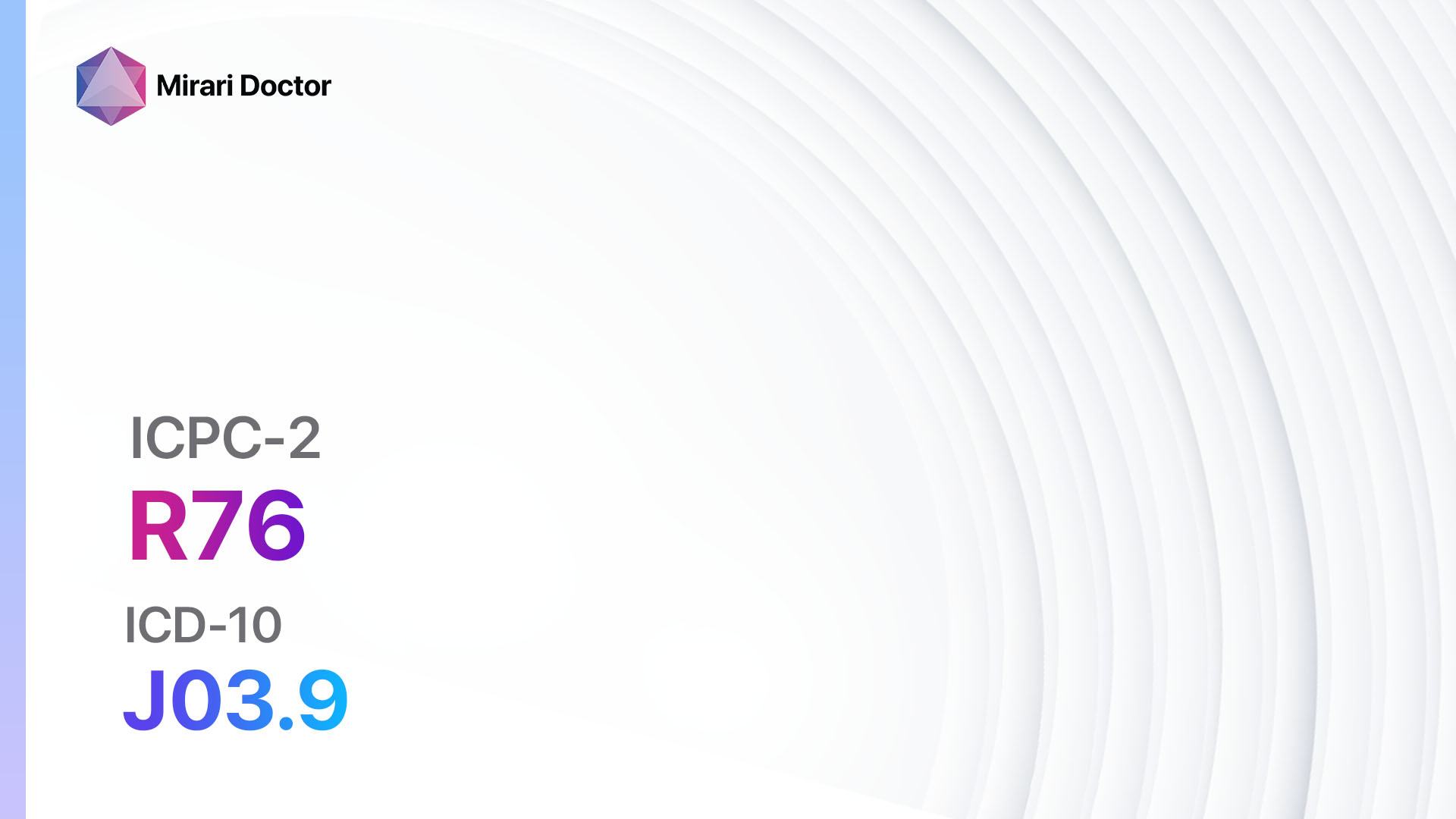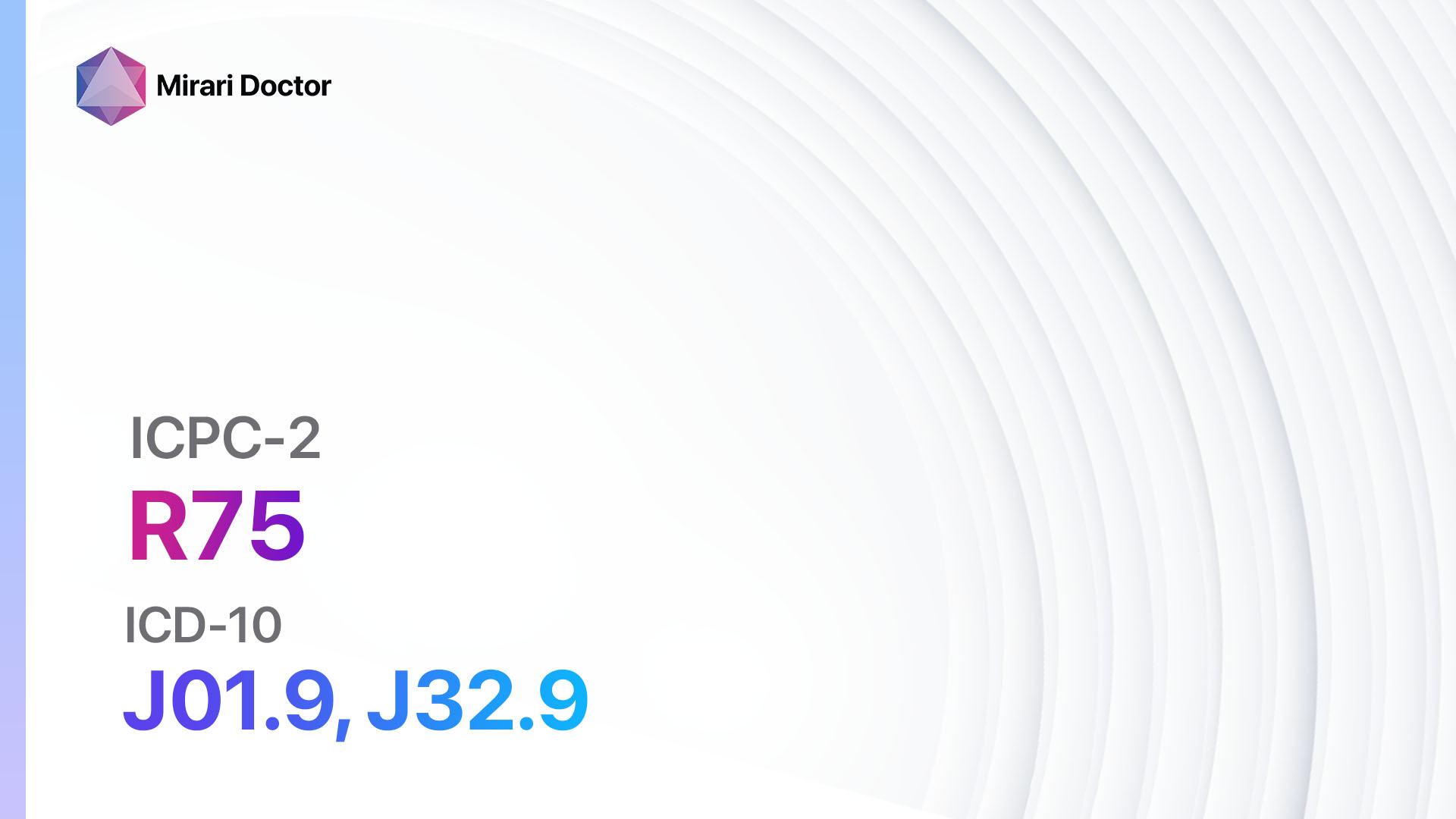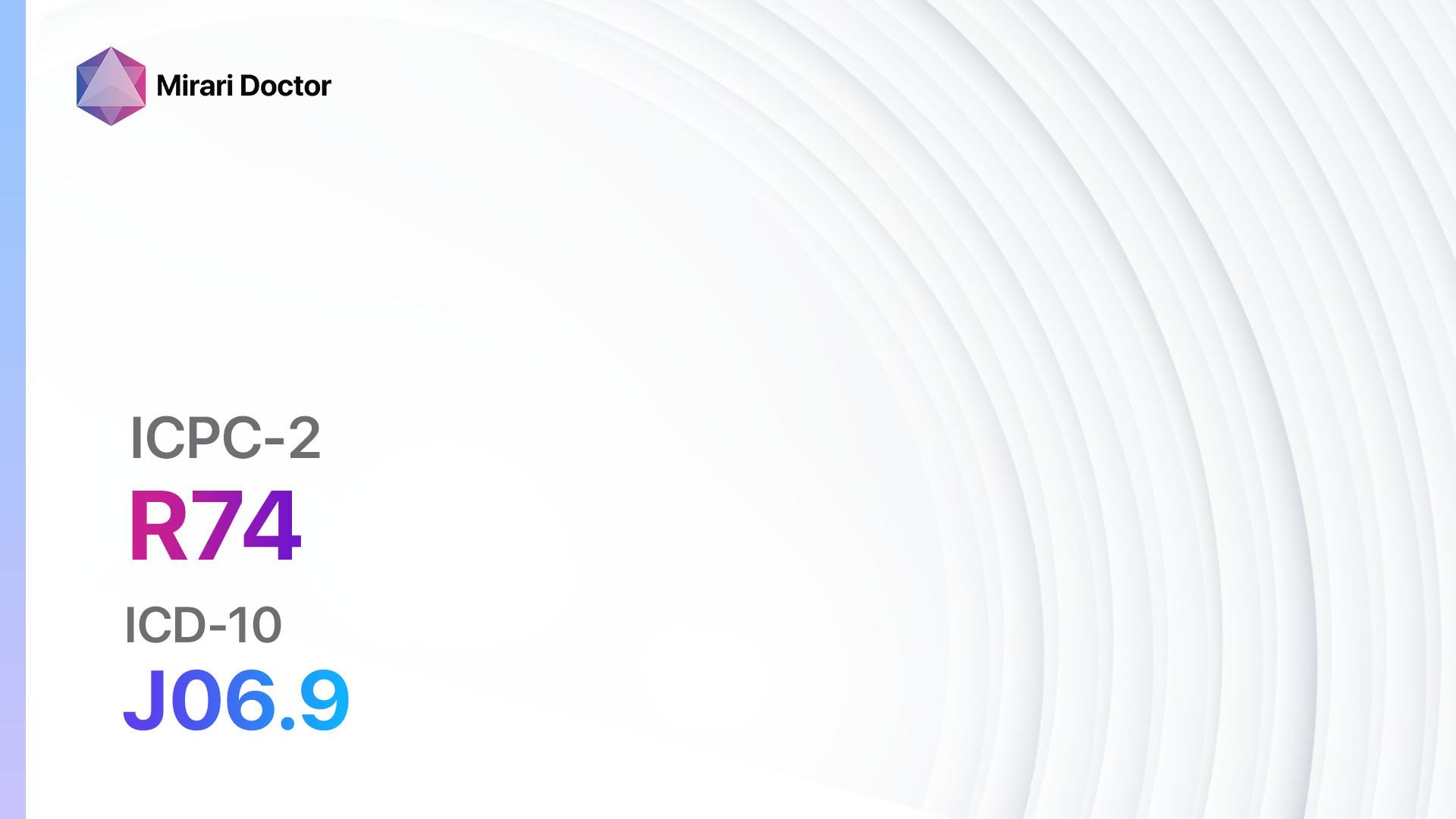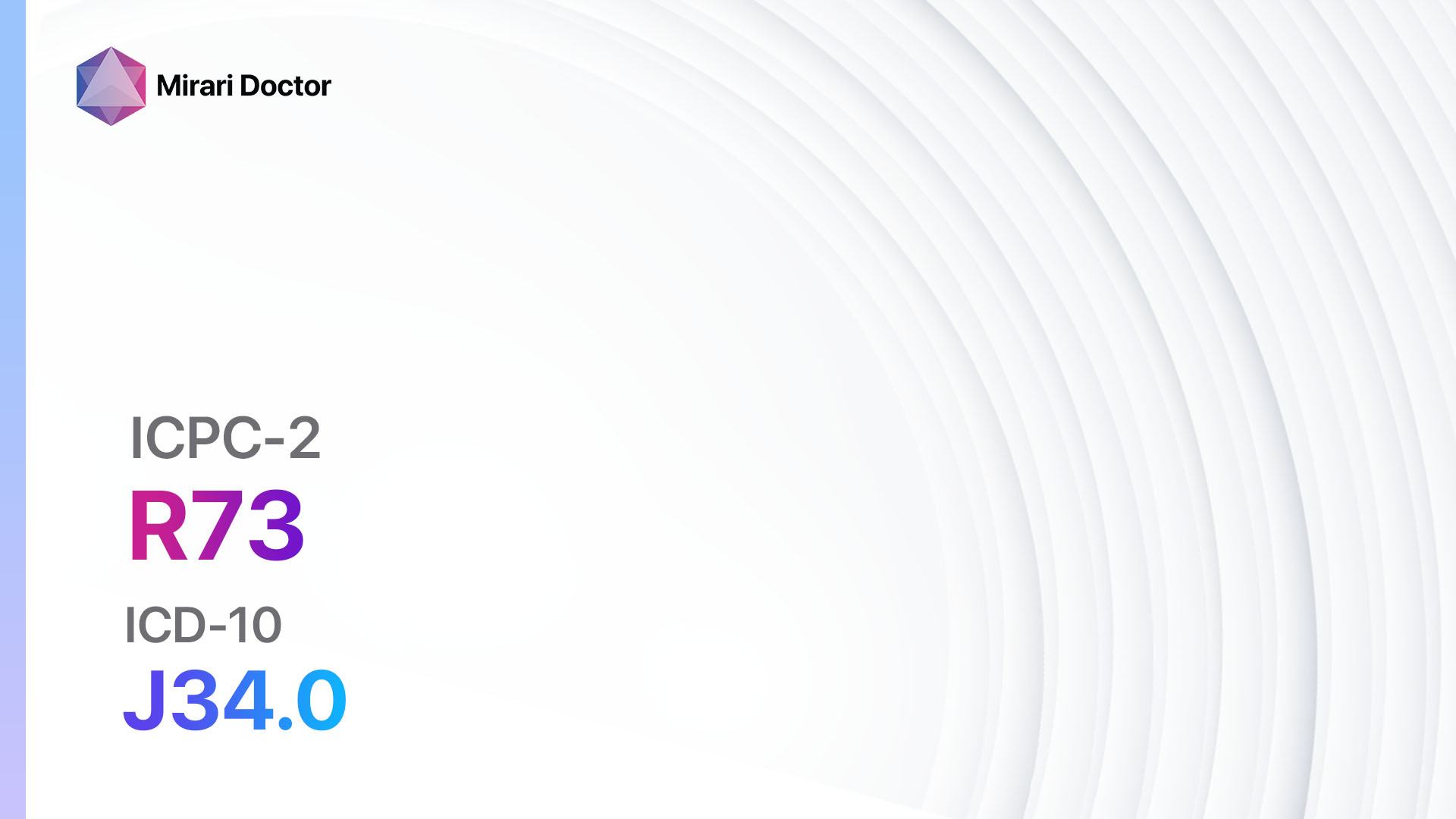
Introduction
Injury respiratory other refers to any injury or trauma to the respiratory system that does not fall under a specific category. This can include injuries to the lungs, trachea, bronchi, or other structures involved in respiration.[1] The aim of this guide is to provide an overview of the symptoms, causes, diagnostic steps, possible interventions, and lifestyle interventions for injury respiratory other.
Codes
- ICPC-2 Code: R88 Injury respiratory other
- ICD-10 Code: S27.9 Injury of unspecified intrathoracic organ[2]
Symptoms
- Chest pain: Sharp or dull pain in the chest, which may worsen with deep breathing or coughing.
- Shortness of breath: Difficulty breathing or a sensation of not getting enough air.
- Cough: Persistent cough, which may be dry or produce phlegm.
- Wheezing: High-pitched whistling sound when breathing.
- Hemoptysis: Coughing up blood or blood-streaked sputum.
- Rapid breathing: Increased respiratory rate.
- Cyanosis: Bluish discoloration of the lips, skin, or nails due to lack of oxygen.
- Chest trauma: Injury to the chest wall, such as fractures or contusions.[3]
Causes
- Blunt trauma: Injury caused by a direct blow to the chest, such as from a fall or motor vehicle accident.
- Penetrating trauma: Injury caused by a sharp object penetrating the chest, such as a gunshot or stabbing.
- Rib fractures: Fractures of the ribs can occur due to trauma or underlying conditions such as osteoporosis.
- Pneumothorax: Collapsed lung due to air accumulation in the pleural space.
- Hemothorax: Accumulation of blood in the pleural space.
- Pulmonary contusion: Bruising of lung tissue due to trauma.
- Tracheobronchial injury: Injury to the trachea or bronchi, often caused by blunt or penetrating trauma.
- Inhalation injury: Injury to the respiratory tract due to inhalation of smoke, chemicals, or hot gases.[4]
Diagnostic Steps
Medical History
- Gather information about the patient’s symptoms, including the onset, duration, and severity.
- Ask about any recent trauma or accidents that may have caused the injury.
- Inquire about any underlying medical conditions, such as asthma or chronic obstructive pulmonary disease (COPD).
- Assess the patient’s smoking history and exposure to environmental toxins.[5]
Physical Examination
- Perform a thorough physical examination, including auscultation of the lungs for abnormal breath sounds.
- Check for signs of chest trauma, such as bruising, swelling, or deformities.
- Assess the patient’s vital signs, including respiratory rate, heart rate, and oxygen saturation.
- Palpate the chest wall for tenderness or crepitus (a crackling sensation).[6]
Laboratory Tests
- Complete blood count (CBC): To assess for signs of infection or anemia.
- Arterial blood gas (ABG): To evaluate oxygen and carbon dioxide levels in the blood.
- Coagulation profile: To assess for any bleeding disorders or abnormal clotting.
- D-dimer: To rule out pulmonary embolism in cases of suspected trauma.
- Sputum culture: To identify any bacterial or fungal infections.[7]
Diagnostic Imaging
- Chest X-ray: To evaluate the lungs, ribs, and other structures in the chest.
- Computed tomography (CT) scan: Provides detailed images of the chest to assess for injuries or abnormalities.
- Ultrasound: Can be used to evaluate the pleural space for fluid or pneumothorax.
- Magnetic resonance imaging (MRI): May be used to assess soft tissue injuries or suspected tracheobronchial injuries.[8]
Other Tests
- Bronchoscopy: A flexible tube with a camera is inserted into the airways to visualize and assess any injuries.
- Pulmonary function tests: To evaluate lung function and assess for any underlying respiratory conditions.
- Echocardiogram: To assess heart function and rule out any cardiac involvement in respiratory symptoms.[9]
Follow-up and Patient Education
- Schedule follow-up appointments to monitor the patient’s progress and adjust treatment as needed.
- Provide education on proper breathing techniques and any lifestyle modifications necessary for recovery.
- Discuss the importance of avoiding smoking and exposure to environmental toxins.
- Encourage the patient to seek medical attention if symptoms worsen or new symptoms develop.[10]
Possible Interventions
Traditional Interventions
Medications:
Top 5 drugs for Injury respiratory other:
- Analgesics (e.g., Acetaminophen, Ibuprofen):
- Cost: Generic versions can be $3-$10/month.
- Contraindications: Allergy to the medication, active gastrointestinal bleeding.
- Side effects: Upset stomach, headache.
- Severe side effects: Liver damage, kidney damage.
- Drug interactions: Warfarin, other nonsteroidal anti-inflammatory drugs (NSAIDs).
- Warning: Do not exceed the recommended dosage.
- Bronchodilators (e.g., Albuterol, Ipratropium):
- Cost: Generic versions can be $10-$50/month.
- Contraindications: Allergy to the medication, uncontrolled hypertension.
- Side effects: Tremor, increased heart rate.
- Severe side effects: Chest pain, palpitations.
- Drug interactions: Beta-blockers, diuretics.
- Warning: Use with caution in patients with cardiovascular disease.
- Corticosteroids (e.g., Prednisone, Fluticasone):
- Cost: Generic versions can be $10-$50/month.
- Contraindications: Allergy to the medication, active infection.
- Side effects: Increased appetite, weight gain.
- Severe side effects: Adrenal suppression, osteoporosis.
- Drug interactions: Anticoagulants, antifungal medications.
- Warning: Long-term use may require gradual tapering.
- Antibiotics (e.g., Amoxicillin, Azithromycin):
- Cost: Generic versions can be $10-$50/month.
- Contraindications: Allergy to the medication, liver dysfunction.
- Side effects: Upset stomach, diarrhea.
- Severe side effects: Severe allergic reactions, Clostridium difficile infection.
- Drug interactions: Warfarin, other antibiotics.
- Warning: Take the full course of antibiotics as prescribed.
- Mucolytics (e.g., Acetylcysteine, Guaifenesin):
- Cost: Generic versions can be $10-$50/month.
- Contraindications: Allergy to the medication, peptic ulcer disease.
- Side effects: Nausea, vomiting.
- Severe side effects: Severe allergic reactions, bronchospasm.
- Drug interactions: Nitroglycerin, antitussive medications.
- Warning: Drink plenty of fluids while taking mucolytics.
Alternative Drugs:
- Anticoagulants (e.g., Heparin, Warfarin): Used in cases of suspected pulmonary embolism or deep vein thrombosis.
- Antifungals (e.g., Fluconazole, Amphotericin B): Used to treat fungal infections in the respiratory system.
- Antivirals (e.g., Oseltamivir, Acyclovir): Used to treat viral infections, such as influenza or herpes.
- Antitussives (e.g., Dextromethorphan, Codeine): Used to suppress coughing.
- Expectorants (e.g., Guaifenesin): Used to thin and loosen mucus.
Surgical Procedures:
- Thoracotomy: Surgical incision into the chest to repair or remove damaged structures.
- Chest tube insertion: Placement of a tube into the pleural space to drain fluid or air.
- Tracheostomy: Creation of a surgical opening in the trachea to assist with breathing.
Alternative Interventions
- Acupuncture: May help reduce pain and improve respiratory function. Cost: $60-$120 per session.
- Chiropractic care: Can help improve posture and lung function. Cost: $50-$200 per session.
- Herbal remedies: Certain herbs, such as mullein or licorice root, may have expectorant or anti-inflammatory properties. Cost: Varies depending on the specific herb and preparation.
- Breathing exercises: Techniques such as pursed-lip breathing or diaphragmatic breathing can help improve lung function. Cost: Free.
- Steam inhalation: Inhaling steam from hot water or herbal infusions may help relieve congestion and promote expectoration. Cost: Free.
Lifestyle Interventions
- Smoking cessation: Quitting smoking is crucial for respiratory health. Cost: Varies depending on the method used (e.g., nicotine replacement therapy, medications, counseling).
- Regular exercise: Physical activity can improve lung function and overall respiratory health. Cost: Varies depending on the chosen activity (e.g., gym membership, equipment).
- Healthy diet: A balanced diet rich in fruits, vegetables, and lean proteins can support respiratory health. Cost: Varies depending on food choices.
- Avoidance of environmental toxins: Minimize exposure to pollutants, allergens, and irritants that can worsen respiratory symptoms. Cost: Varies depending on the specific measures taken (e.g., air purifiers, allergy-proof bedding).
It is important to note that the cost ranges provided are approximate and may vary depending on the location and availability of the interventions.
Mirari Cold Plasma Alternative Intervention
Understanding Mirari Cold Plasma
- Safe and Non-Invasive Treatment: Mirari Cold Plasma is a safe and non-invasive treatment option for various skin conditions. It does not require incisions, minimizing the risk of scarring, bleeding, or tissue damage.
- Efficient Extraction of Foreign Bodies: Mirari Cold Plasma facilitates the removal of foreign bodies from the skin by degrading and dissociating organic matter, allowing easier access and extraction.
- Pain Reduction and Comfort: Mirari Cold Plasma has a local analgesic effect, providing pain relief during the treatment, making it more comfortable for the patient.
- Reduced Risk of Infection: Mirari Cold Plasma has antimicrobial properties, effectively killing bacteria and reducing the risk of infection.
- Accelerated Healing and Minimal Scarring: Mirari Cold Plasma stimulates wound healing and tissue regeneration, reducing healing time and minimizing the formation of scars.
Mirari Cold Plasma Prescription
Video instructions for using Mirari Cold Plasma Device – R88 Injury respiratory other (ICD-10:S27.9)
| Mild | Moderate | Severe |
| Mode setting: 1 (Infection) Location: 5 (Lungs) Morning: 15 minutes, Evening: 15 minutes |
Mode setting: 1 (Infection) Location: 5 (Lungs) Morning: 30 minutes, Lunch: 30 minutes, Evening: 30 minutes |
Mode setting: 1 (Infection) Location: 5 (Lungs) Morning: 30 minutes, Lunch: 30 minutes, Evening: 30 minutes |
| Mode setting: 2 (Wound Healing) Location: 5 (Lungs) Morning: 15 minutes, Evening: 15 minutes |
Mode setting: 2 (Wound Healing) Location: 5 (Lungs) Morning: 30 minutes, Lunch: 30 minutes, Evening: 30 minutes |
Mode setting: 2 (Wound Healing) Location: 5 (Lungs) Morning: 30 minutes, Lunch: 30 minutes, Evening: 30 minutes |
| Mode setting: 3 (Antiviral Therapy) Location: 5 (Lungs) Morning: 15 minutes, Evening: 15 minutes |
Mode setting: 3 (Antiviral Therapy) Location: 5 (Lungs) Morning: 30 minutes, Lunch: 30 minutes, Evening: 30 minutes |
Mode setting: 3 (Antiviral Therapy) Location: 5 (Lungs) Morning: 30 minutes, Lunch: 30 minutes, Evening: 30 minutes |
| Mode setting: 7 (Immunotherapy) Location: 4 (Heart, Bile & Pancreas) Morning: 15 minutes, Evening: 15 minutes |
Mode setting: 7 (Immunotherapy) Location: 4 (Heart, Bile & Pancreas) Morning: 30 minutes, Lunch: 30 minutes, Evening: 30 minutes |
Mode setting: 7 (Immunotherapy) Location: 4 (Heart, Bile & Pancreas) Morning: 30 minutes, Lunch: 30 minutes, Evening: 30 minutes |
| Total Morning: 60 minutes approx. $10 USD, Evening: 60 minutes approx. $10 USD |
Total Morning: 120 minutes approx. $20 USD, Lunch: 120 minutes approx. $20 USD, Evening: 120 minutes approx. $20 USD, |
Total Morning: 120 minutes approx. $20 USD, Lunch: 120 minutes approx. $20 USD, Evening: 120 minutes approx. $20 USD, |
| Usual treatment for 7-60 days approx. $140 USD – $1200 USD | Usual treatment for 6-8 weeks approx. $2,520 USD – $3,360 USD |
Usual treatment for 3-6 months approx. $5,400 USD – $10,800 USD
|
 |
|
Use the Mirari Cold Plasma device to treat Injury respiratory other effectively.
WARNING: MIRARI COLD PLASMA IS DESIGNED FOR THE HUMAN BODY WITHOUT ANY ARTIFICIAL OR THIRD PARTY PRODUCTS. USE OF OTHER PRODUCTS IN COMBINATION WITH MIRARI COLD PLASMA MAY CAUSE UNPREDICTABLE EFFECTS, HARM OR INJURY. PLEASE CONSULT A MEDICAL PROFESSIONAL BEFORE COMBINING ANY OTHER PRODUCTS WITH USE OF MIRARI.
Step 1: Cleanse the Skin
- Start by cleaning the affected area of the skin with a gentle cleanser or mild soap and water. Gently pat the area dry with a clean towel.
Step 2: Prepare the Mirari Cold Plasma device
- Ensure that the Mirari Cold Plasma device is fully charged or has fresh batteries as per the manufacturer’s instructions. Make sure the device is clean and in good working condition.
- Switch on the Mirari device using the power button or by following the specific instructions provided with the device.
- Some Mirari devices may have adjustable settings for intensity or treatment duration. Follow the manufacturer’s instructions to select the appropriate settings based on your needs and the recommended guidelines.
Step 3: Apply the Device
- Place the Mirari device in direct contact with the affected area of the skin. Gently glide or hold the device over the skin surface, ensuring even coverage of the area experiencing.
- Slowly move the Mirari device in a circular motion or follow a specific pattern as indicated in the user manual. This helps ensure thorough treatment coverage.
Step 4: Monitor and Assess:
- Keep track of your progress and evaluate the effectiveness of the Mirari device in managing your Injury respiratory other. If you have any concerns or notice any adverse reactions, consult with your health care professional.
Note
This guide is for informational purposes only and should not replace the advice of a medical professional. Always consult with your healthcare provider or a qualified medical professional for personal advice, diagnosis, or treatment. Do not solely rely on the information presented here for decisions about your health. Use of this information is at your own risk. The authors of this guide, nor any associated entities or platforms, are not responsible for any potential adverse effects or outcomes based on the content.
Mirari Cold Plasma System Disclaimer
- Purpose: The Mirari Cold Plasma System is a Class 2 medical device designed for use by trained healthcare professionals. It is registered for use in Thailand and Vietnam. It is not intended for use outside of these locations.
- Informational Use: The content and information provided with the device are for educational and informational purposes only. They are not a substitute for professional medical advice or care.
- Variable Outcomes: While the device is approved for specific uses, individual outcomes can differ. We do not assert or guarantee specific medical outcomes.
- Consultation: Prior to utilizing the device or making decisions based on its content, it is essential to consult with a Certified Mirari Tele-Therapist and your medical healthcare provider regarding specific protocols.
- Liability: By using this device, users are acknowledging and accepting all potential risks. Neither the manufacturer nor the distributor will be held accountable for any adverse reactions, injuries, or damages stemming from its use.
- Geographical Availability: This device has received approval for designated purposes by the Thai and Vietnam FDA. As of now, outside of Thailand and Vietnam, the Mirari Cold Plasma System is not available for purchase or use.
References
- Khandhar SJ, Johnson SB, Calhoon JH. Overview of thoracic trauma in the United States. Thorac Surg Clin. 2007;17(1):1-9.
- World Health Organization. International Statistical Classification of Diseases and Related Health Problems, 10th Revision (ICD-10). Geneva: WHO; 2019.
- Wanek S, Mayberry JC. Blunt thoracic trauma: flail chest, pulmonary contusion, and blast injury. Crit Care Clin. 2004;20(1):71-81.
- Cohn SM, Dubose JJ. Pulmonary contusion: an update on recent advances in clinical management. World J Surg. 2010;34(8):1959-1970.
- Mowery NT, Gunter OL, Collier BR, et al. Practice management guidelines for management of hemothorax and occult pneumothorax. J Trauma. 2011;70(2):510-518.
- Karmy-Jones R, Jurkovich GJ. Blunt chest trauma. Curr Probl Surg. 2004;41(3):211-380.
- Hoth JJ, Martin RS, Yoza BK, et al. Pulmonary contusion primes systemic innate immunity responses. J Trauma. 2009;67(1):14-21.
- Kaewlai R, Avery LL, Asrani AV, Novelline RA. Multidetector CT of blunt thoracic trauma. Radiographics. 2008;28(6):1555-1570.
- Kiser AC, O’Brien SM, Detterbeck FC. Blunt tracheobronchial injuries: treatment and outcomes. Ann Thorac Surg. 2001;71(6):2059-2065.
- Simon B, Ebert J, Bokhari F, et al. Management of pulmonary contusion and flail chest: an Eastern Association for the Surgery of Trauma practice management guideline. J Trauma Acute Care Surg. 2012;73(5 Suppl 4):S351-S361.
Related articles
Made in USA


